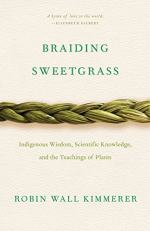
|
| Name: _________________________ | Period: ___________________ |
This quiz consists of 5 multiple choice and 5 short answer questions through Tending Sweetgrass.
Multiple Choice Questions
1. What does the true name Tahawus mean among the Potawatomi people?
(a) Flaming lava.
(b) Cloud Splitter.
(c) Gentle slope.
(d) Large eruption.
2. What is said to be a "radical proposition" in a consumer society in "Allegiance to Gratitude" (136)?
(a) Contentment.
(b) Gift-giving.
(c) Gratitude.
(d) Detachment.
3. The author states in "Skywoman Falling" that when her people braid sweetgrass, they are braiding what?
(a) The whiskers of the Lion.
(b) The hair of Mother Earth.
(c) Love, hope, and charity.
(d) The hair of Father Earth.
4. What gathering in Oklahoma does the author describe as "an antidote to the divide-and-conquer strategy that was used to separate our people from each other and from our homelands" (31)?
(a) The Potawatomi Gathering of Nations.
(b) The Hunting Moon Pow Wow.
(c) The Morongo Thunder and Lightning Pow Wow.
(d) The Coushatta Gathering of Nations.
5. From where were the author's ancestors first removed from their land, according to the narrative in "The Council of Pecans"?
(a) Caifornia.
(b) Wisconsin.
(c) Oregon.
(d) New Mexico.
Short Answer Questions
1. What is the address called that the children recite at the Onondaga school described by the author in "Allegiance to Gratitude"?
2. What does appreciation beget, according to the author in "Allegiance to Gratitude"?
3. What does the author say the word for sweetgrass is in her people's language in the Preface?
4. What word from the Preface refers to a book containing a list of medicinal drugs with their effects and directions for use?
5. In what small village is Evon Peter a Chief in northeastern Alaska?
|
This section contains 267 words (approx. 1 page at 300 words per page) |

|




